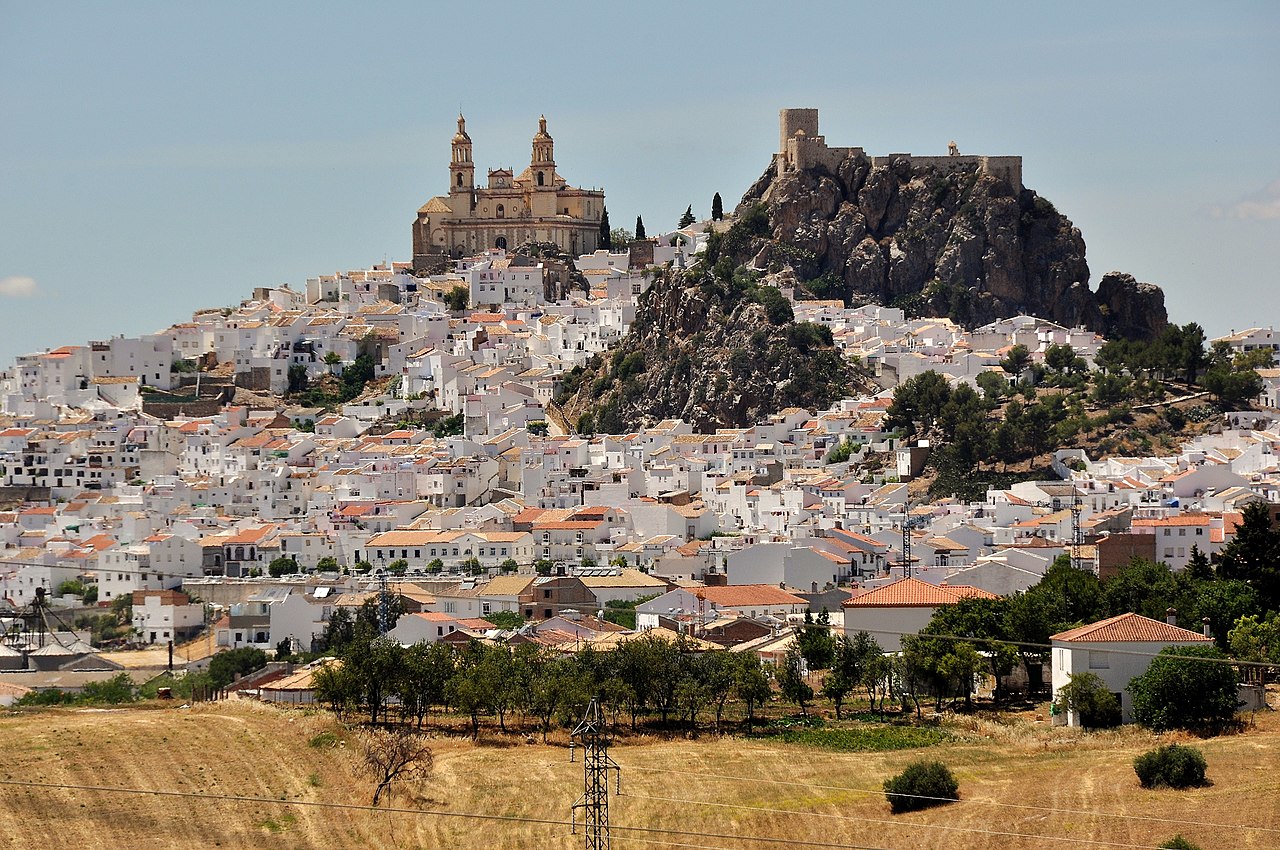
Numerous white villages in spain. But, specifically, they receive this name those that are between the Andalusian provinces of Cadiz and Malaga. More specifically, they are those distributed by the Sierra and Janda counties in the first and for the Serrania de Ronda In the second.
In fact, there is a tour called Route of the White Villages. But more important is that you know the reason for this name. It is because these towns are made up of profusely whitewashed houses to repel the heat. Likewise, its streets are narrow and generally cobbled, giving an even more typical appearance to these white towns in Spain. If you want meet some of the prettiest, we invite you to continue reading.
Setenil de las Bodegas
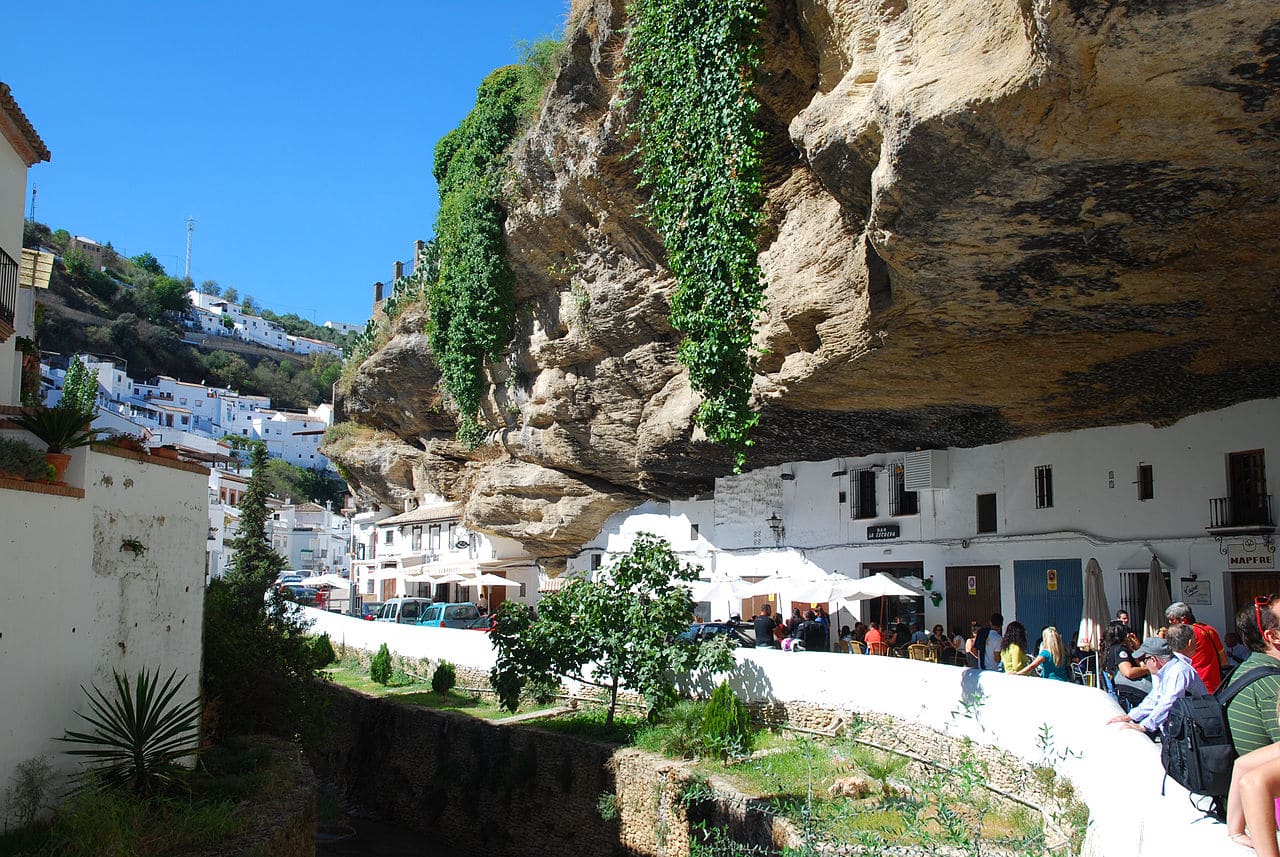
Setenil de las Bodegas, with its impressive rock, which shelters the cave-houses
Located in the region of the Sierra de Cádiz, its urban center, which is embedded in the great pit formed by the Trejo River, has been declared Historic Artistic Set. Likewise, it is located at an altitude of more than six hundred meters and has about three thousand inhabitants.
Just the image of the cave houses that go into the mountains deserve your visit to this town in Cadiz. It is a type of construction called "shelter under rock" dating back to the Neolithic. But you must also visit the castle of Setenil, a Nasrid fortress from the XNUMXth century. It is located in the highest part of the town and its walls and towers house buildings such as the fortress, the keep, the medina or the mosque.
The other great monument in Setenil is the Church of Our Lady of the Incarnation, a XNUMXth-century temple in which the Gothic and the Mudejar coexist, but they are not combined. In fact, we could almost tell you about two churches, one in each style. They are also interesting hermitages such as those of San Sebastián, Nuestra Señora del Carmen or San Benito.
On the other hand, the House of Culture is located in a XNUMXth century building that stands out for its impressive Mudejar coffered ceiling. A century older is the Flour House and also medieval are the bridges of the Villa and Triana street. But, if we are talking about streets, the most impressive are those of Shadow Caves and Caves of the Sun. As its name suggests, they are those of the aforementioned cave-houses that are covered by a huge rocky outcrop.
Olvera
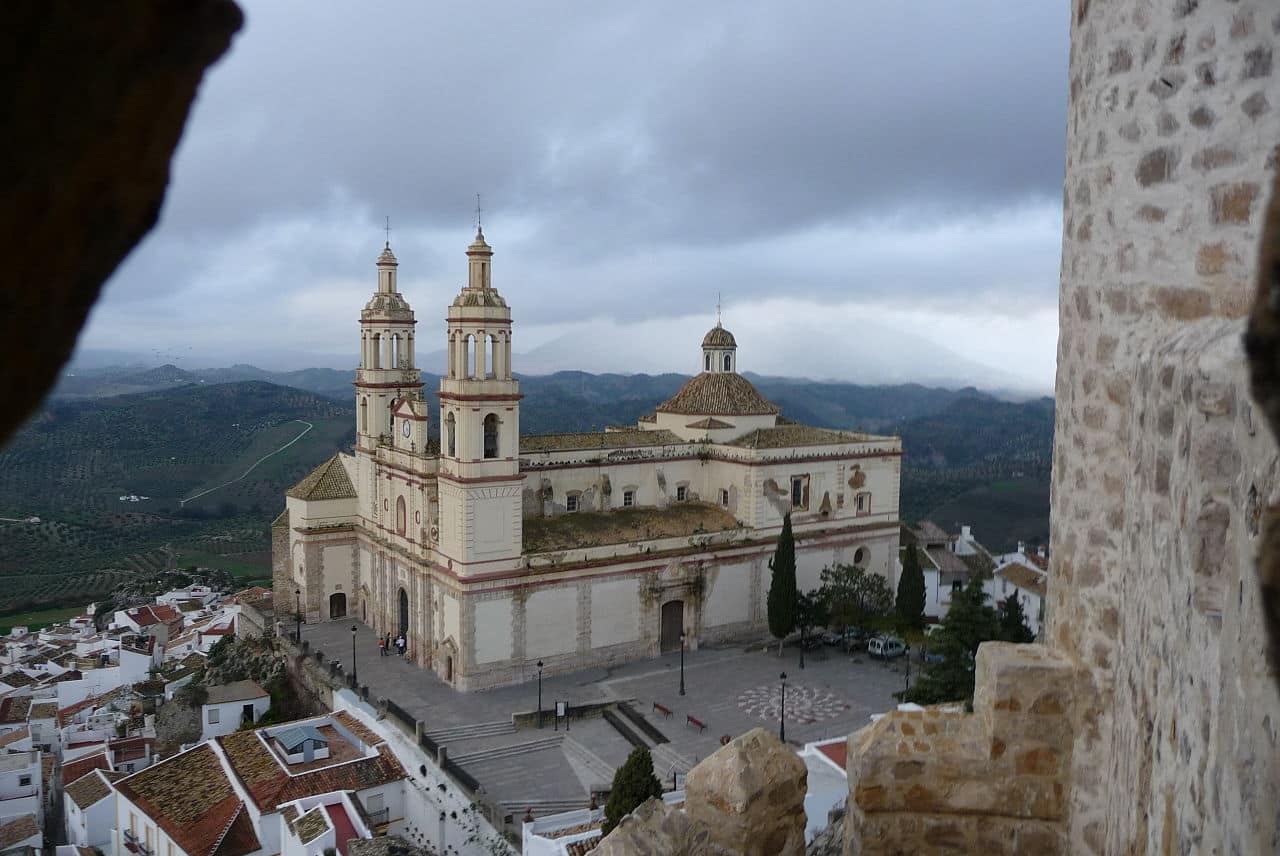
Church of Our Lady of the Incarnation in Olvera
Also in the region of Sierra de Cádiz you will find this beautiful town of just eight thousand inhabitants. Despite this, he proudly holds the title of city, which was granted to him by the king Alfonso XII in 1877. Likewise, the Sierra Greenway, an old railway line converted into a hiking route with a category of tourist interest. As if that were not enough, in its municipal term is the natural reserve of the Rock of Zaframagón.
As for its monuments, you should know that Olvera was declared Historic Artistic Set in 1983. Much of the blame lies with its steep and narrow streets and its whitewashed houses that include it among the white towns of Spain. But also its spectacular arabic castle built in the XNUMXth century that dominates it from the top of a rock. It is not the only one in the municipality, as it also has the one with Carastas.
But, returning to Olvera, the remains of the Muslim wall and the House of the Cilla, which served as a barn. In the latter, currently, you can visit the permanent exhibition entitled The Border and the Castles. For its part, Church of Our Lady of the Incarnation is an impressive neoclassical construction from the XNUMXth century, while the Socorro it is older and combines Gothic and Mudejar. Finally, already in the outskirts, you have the Sanctuary of Our Lady of Remedies, which houses the image of the patron saint of the town.
In its surroundings, the pilgrimage called el Quasimodo Monday. It has nothing to do with the famous hunchback of Notre Dame, but with a terrible drought in 1715 that the faithful considered resolved by the Virgen de los Remedios. And it is celebrated after Easter.
Grazalema, one of the most beautiful white villages in Spain
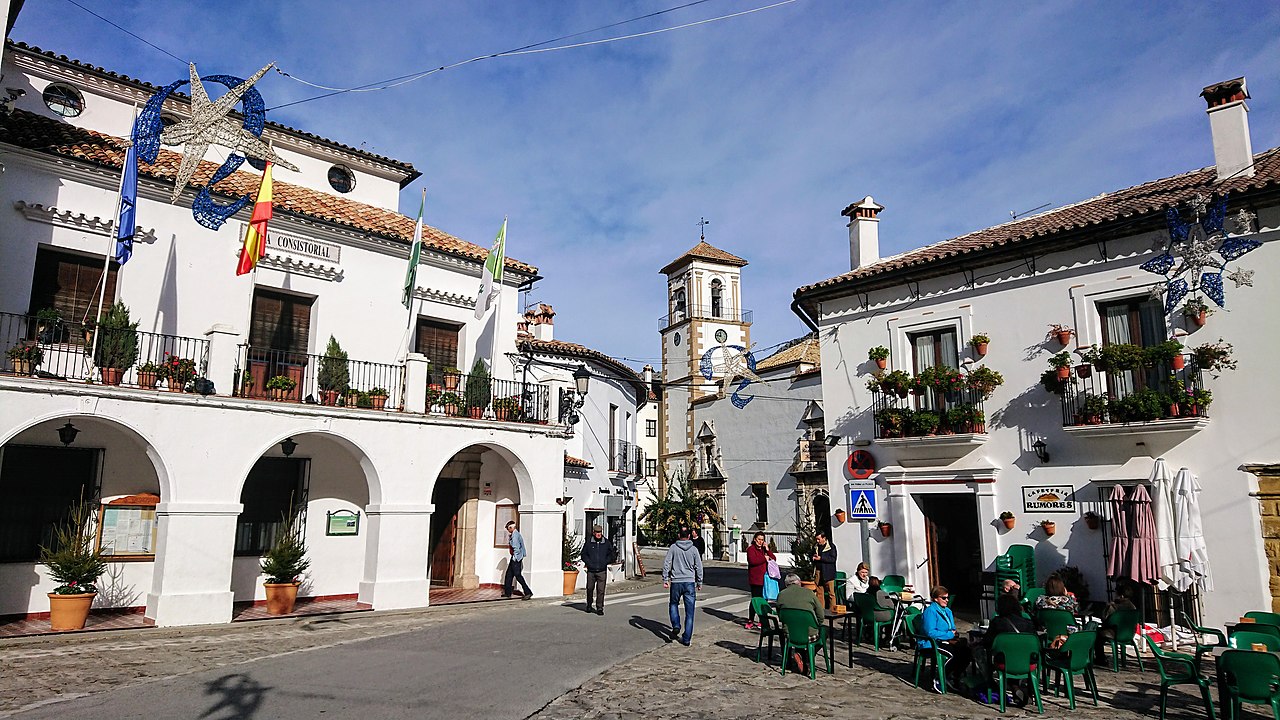
Town Hall of Grazalema
All the towns on the route that we are traveling with you are unique, but Grazalema is one of the most beautiful due to its character. Nestled in the middle of the mountains and sheltered by the Big Rock, where the Guadalete river, this town has a wonderful natural environment. Just approach them Asomaderos or Los Peñascos viewpoints to check.
But, in addition, Grazalema has a precious monumental heritage. You can start your tour by Spain Square, where the Town Hall and the Church of the Dawn, a XNUMXth century temple built in the Renaissance style. For its part, that of Our Lady of the Incarnation holds the image of Saint Athanasius, patron saint of the town. And, next to it, you can see the spectacular rope bull monument, one of the traditions of Grazalema.
For its part, in the Doctor Mateos Gago Street you can see manor houses of the XVIII and the tower of the church of san juan. It is a little older San Jose's, inside which images of the Virgen del Carmen and the Crucified Christ from the XNUMXth century are housed. But perhaps the most beautiful thing about Grazalema is its white houses with barred windows and decorated with flowers.
However, even the town of Cadiz has a medieval road. she came from ubrique and reached the town bordering the Guadalete River. In any case, do not leave the town without knowing the Grazalema Blanket Museum, nor without trying the beaker, a typical cake filled with angel hair.
Zahara de la Sierra
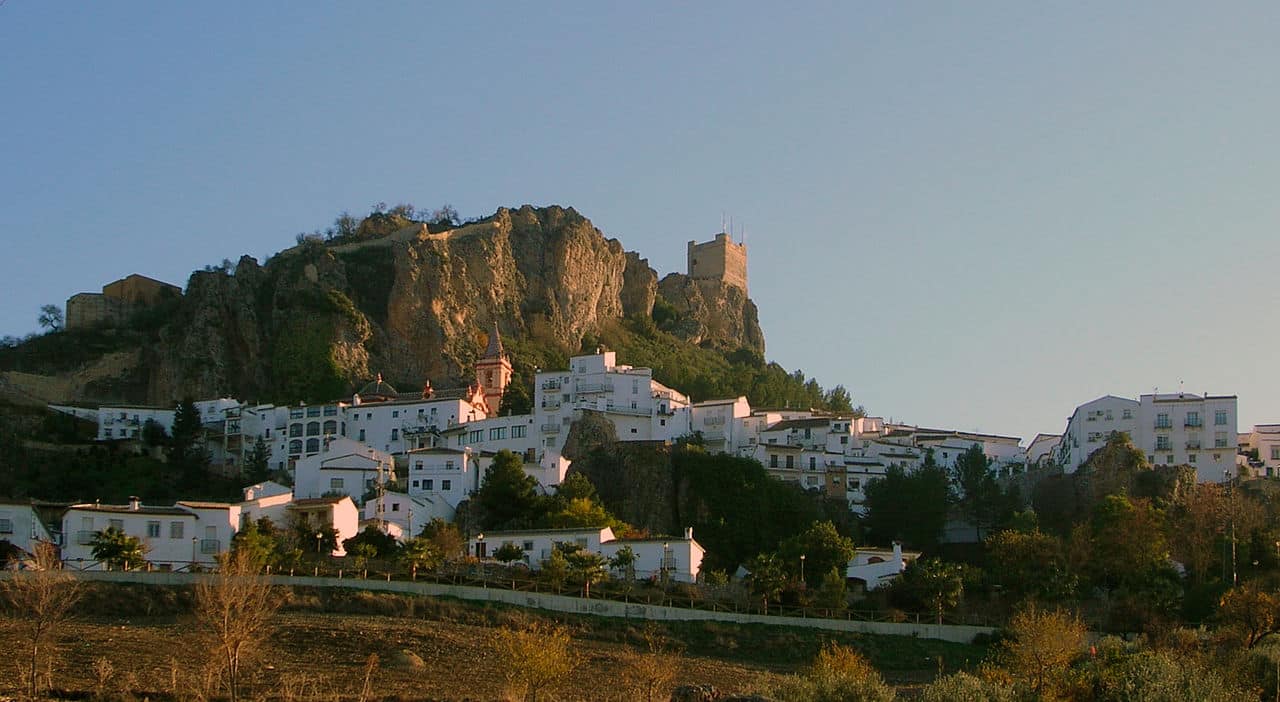
View of Zahara de la Sierra, one of the most beautiful white villages in Spain
Like the previous one, this locality belongs to the white towns of Spain located in the Sierra de Grazalema Natural Park. It is also located at the foot of the Zahara-El Gastor reservoir and it also has privileged surroundings with the Sierras de Líjar and El Pinar or the Arroyo de Bocaleones. All this makes the area perfect for practice sports such as hiking, caving or climbing.
As for its monuments, the highlight of the town is the old nazarí town. remains of his castle, who watches over her from the top of a hill, and from the main church, built by the Christians in the fifteenth century after conquering the town. Likewise, at the entrance there are vestiges of the Arab wall and the entrance gate to the complex.
More modern is church of Santa Maria, since it was built in the XNUMXth century following the canons of the final baroque combined with those of the first neoclassicism. The little one is also very pretty. Chapel of Saint John Lateran, inside which there are valuable carvings from the XNUMXth and XNUMXth centuries.
Cortes de la Frontera
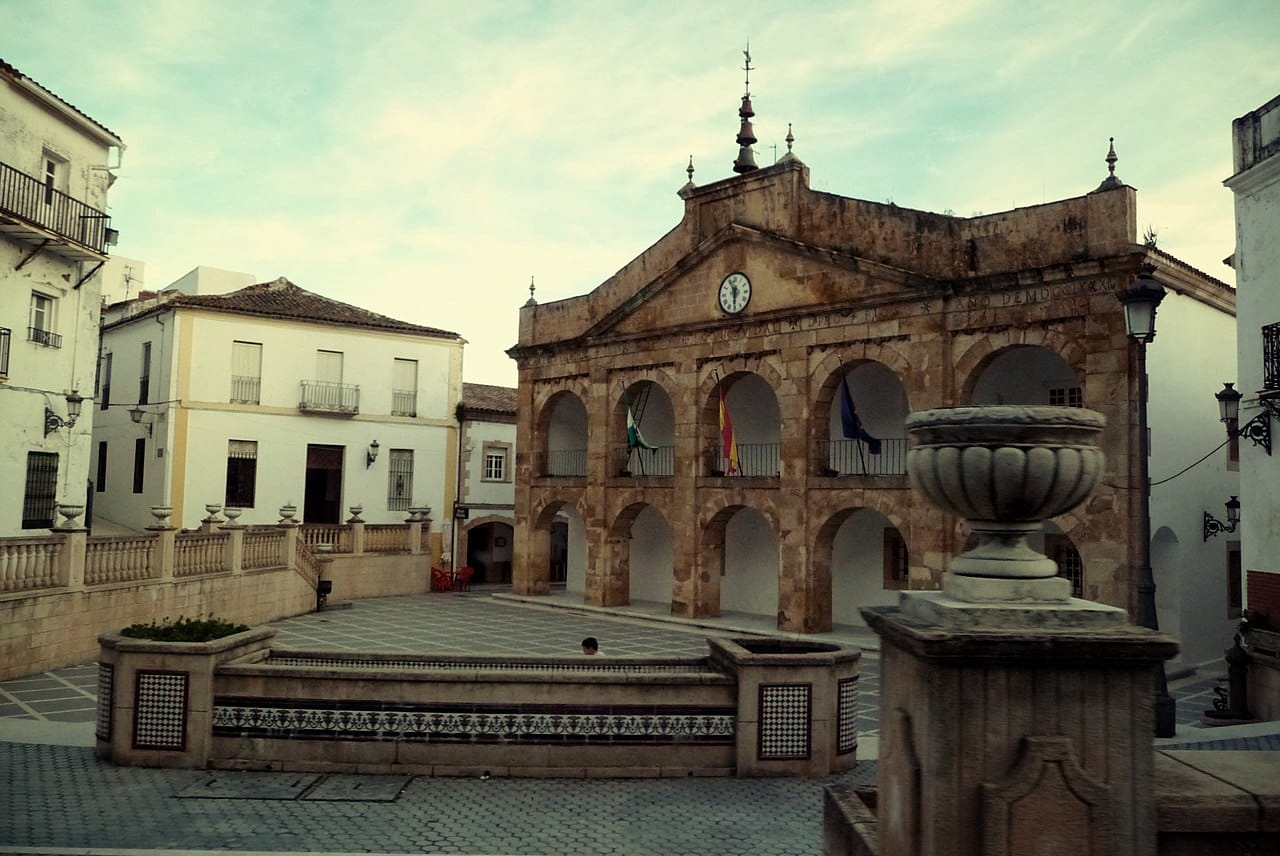
Plaza de Carlos III, in Cortes de la Frontera
In our journey through the white towns in Spain, we now come to the Serrania de Ronda region to visit Cortes, located specifically in the Guadiaro river valley. With barely three thousand inhabitants, its whitewashed houses adorned with flowers will also dazzle you. But, in addition, we advise you to visit the Roman and Arab site of Cortes the Elder and Stone house, a XNUMXth-century Paleo-Christian church carved into the rock.
Already to the Muslim era belongs the Step Tower, a watchtower built in the XNUMXth century. Also, in the Carlos III square, Do you have the Town hall, a neoclassical construction from 1784 with the royal coat of arms in its center. Also to this century belongs the chapel of Valdenebros, whose façade combines Gothic and Mudejar styles.
For its part, the parish church of Our Lady of the Rosary It was built in the mid-XNUMXth century and its prismatic tower attached to the head stands out. Finally, from that time is also the bullring. But no less beautiful are the surroundings of this small town, with the Alcornocales Natural Park, in which you can see the impressive Vulture Canyon along with other wonders.
Gaucín, another of the white towns of Malaga
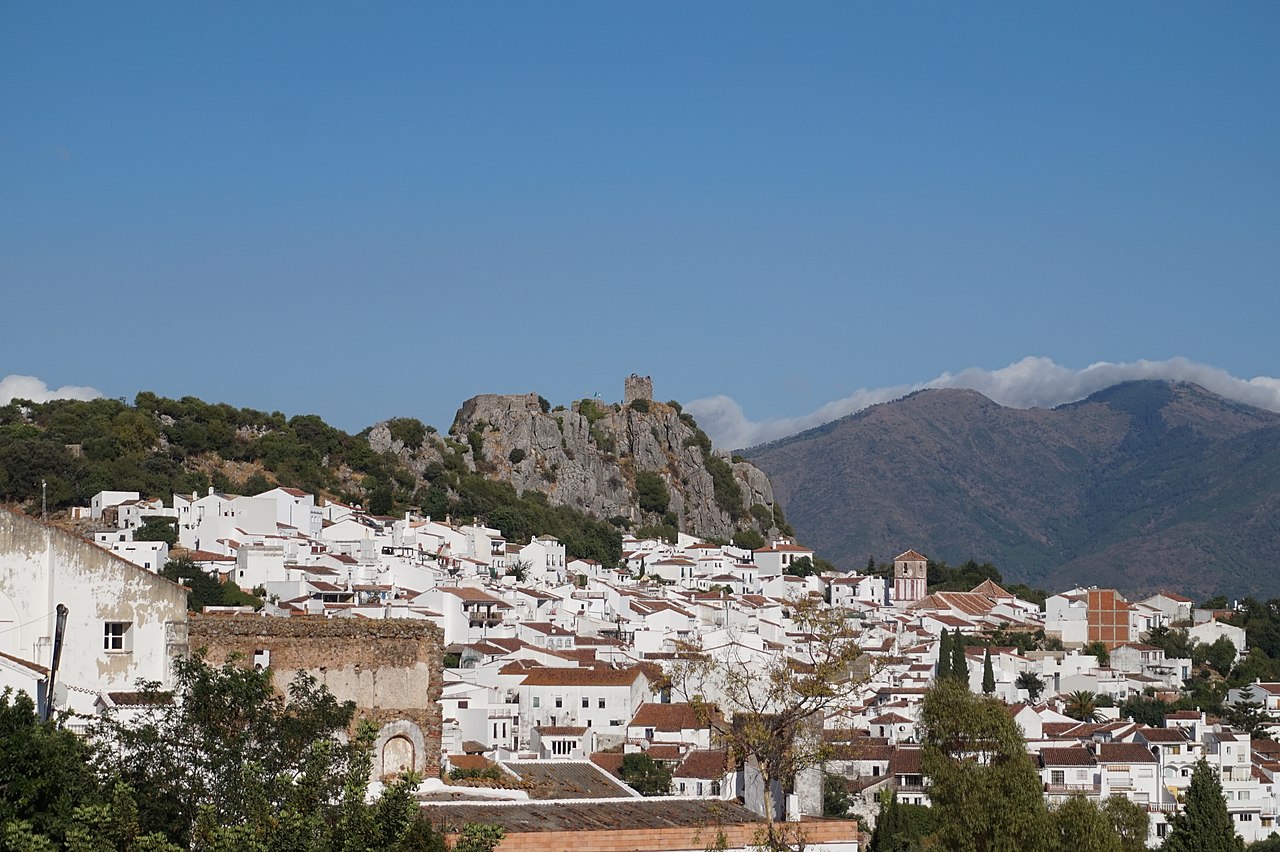
Gaucín, a beautiful white town in the Serranía de Ronda
We end our trip through the white towns in Spain visiting Gaucín, also in the Serrania de Ronda region. Made up of streets with a Moorish layout, it is dominated by the eagle castle, a Roman construction improved by the Arabs that was of great importance in the Middle Ages. In fact, Guzmán el Bueno he died when trying to conquer it. Currently, remains of the wall, the cisterns and the homage tower are preserved. Also on its premises is the Hermitage of the Holy Child.
But you should also visit in Gaucín the church of san sebastian, built in the XNUMXth century, and the baroque fountain located in the central square of the town. Likewise, the culture house is located in a old convent of the XVIII abandoned with the confiscation of Mendizábal.
In conclusion, we have shown you some of the most beautiful white villages in spain. But we could also tell you about many others. For example, Genalguacil, which houses an entire open-air museum; match, with the beautiful church of Santa Rosa de Lima; Arcos de la Frontera, one of the largest with thirty thousand inhabitants and jewels such as the castle or the palace of the Count of Águila, and ubrique, with its wonderful old town from the XNUMXth to the XNUMXth centuries. All this without forgetting the spectacular Ronda. Don't you want to know these wonderful towns?